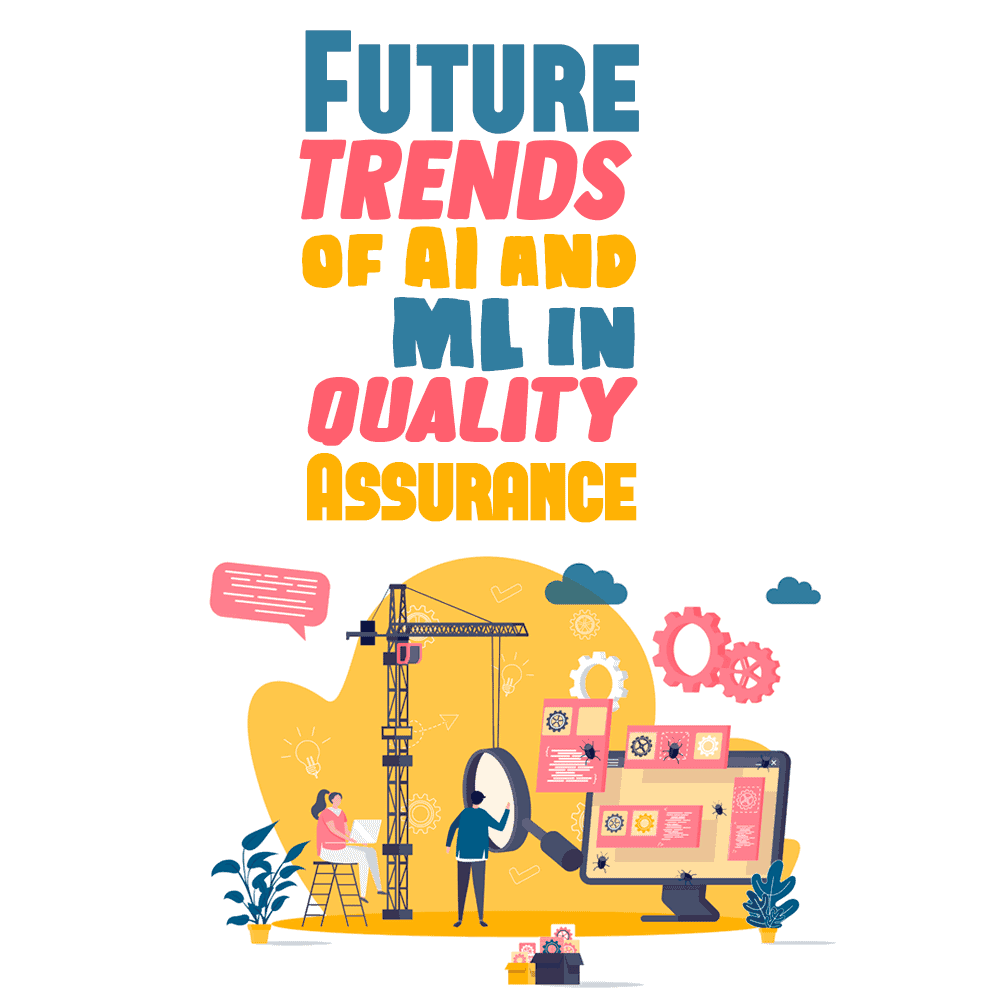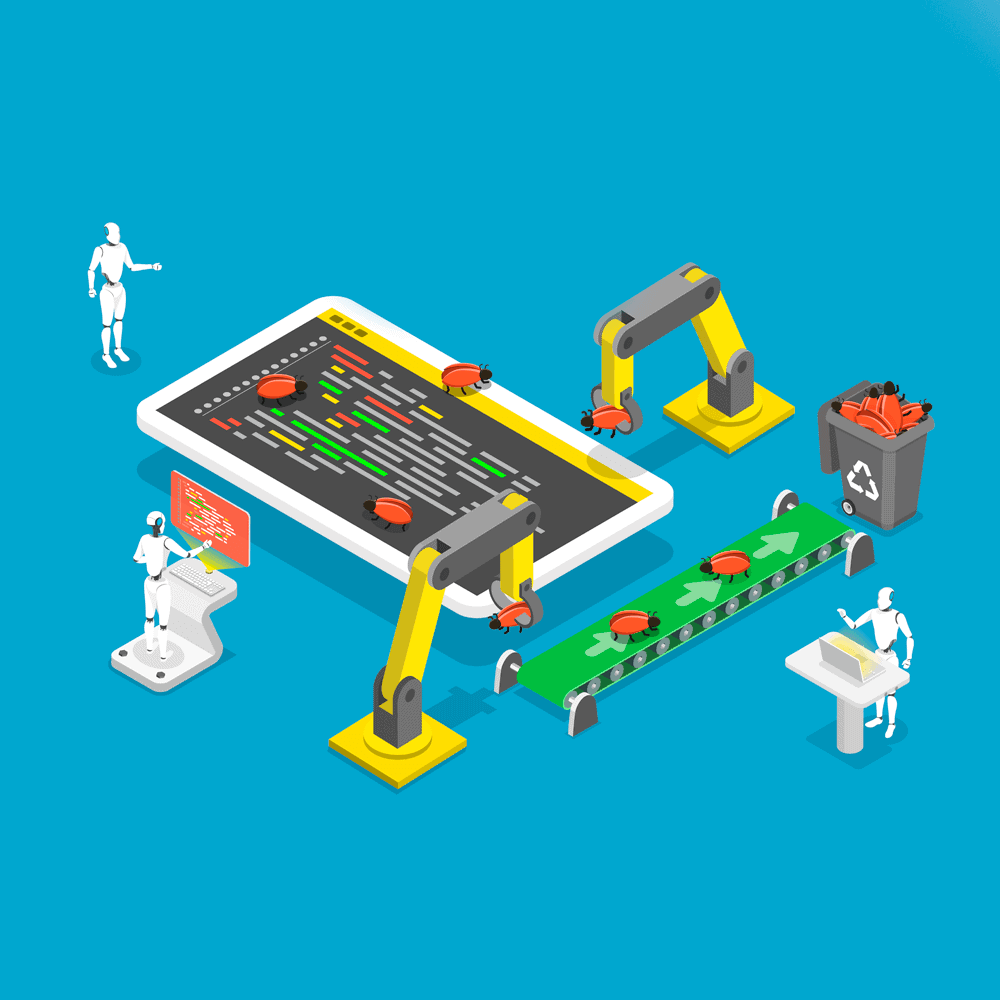
Although it is hard to entirely replace the human element, by incorporating AI and ML, it is possible to improve QA testing in an organization, as we will see in more detail in this post.
According to Gartner, AI will drive infrastructure decisions through 2023. Advancing AI pilots into production requires specialized infrastructure resources that one can expand and develop. To ensure high-performance rates, the enterprise IT team should regularly optimize the AI models. They may need to combine ML models or standardization data pipelines with live data sources to get real-time decisions.
In this post we’ll take a closer look at AI and ML, and particularly at how they can help the QA testing process, greatly improving your productivity and operations in general.
Difference Between Artificial Intelligence and Machine Learning
Artificial Intelligence is described as the simulation of human intelligence in machines. It is a simplified problem-solving process for humans and allows the software to manage tasks without being explicitly programmed. Artificial intelligence aims to involve reasoning, learning, and perception. This technology is highly used in different industries, including healthcare and finance.
Machine learning, on the other hand, is an application of AI that helps machines access information and supports them while performing various tasks. ML technology helps us understand learning algorithms and enables systems to obtain secret insights.
From smart speakers and smart coffee makers, to smartphones and smart cars, such devices can simplify our everyday life and make our job easier. Advanced technologies like artificial intelligence and machine learning have become common technologies for high-stakes industries such as finance, automotive, and medical.
DevOps teams should implement a strong strategy for QA testing to ensure that the application you develop by integrating the AI/Ml technologies is safe for the public and keeps their personal data protected from cybercriminals.
Know the End-Goal of Software Testing
Once you’re done with the development, you can move to the testing phase of the system development life cycle (SDLC). QA teams need to confirm that end-users can use the application per their expectations. It is necessary to evaluate the following parts of the end-to-end testing:
- The scope of the research
- Targeted errors/bugs
- Customer behavior
- Implementation of planned test cases
Make sure the deployment success depends upon the E2E (end-to-end) testing plans. It is crucial to prepare short and quick testing cycles, especially if you have particular time constraints and ever-changing requirements. Based on your effective test cases or test cycles, you can ensure an application of high quality and satisfy the specific needs of end-users.
Best Approach To Follow for Improving the Testing Process with AI and ML
With all this in mind, the question then is: How can AI and ML help us improve QA testing? The future is of course open to amazing opportunities, but the five areas listed below are those you can begin considering now.
Consider How Regression Testing Is Performed
Due to the need for more rapid deployment, it is extremely important to consider how regression testing is performed, especially if you as a human are unable to produce accurate results. When it comes to making changes in the UI of an application, ML and AI help in examining and determining shapes, sizes and colors.
While manual testing, most QA testers miss some necessary steps like the validation of the changes that you can better do with AI. Therefore, whenever dealing with more tedious tasks, companies should perform regression testing using AI. On the other hand, machine learning can be used to generate successful test cases.
Choose a Time-Saving Approach
AI allows you to save time in software testing, which is not possible with manual testing. AI can help you solve complex tasks such as early detection of bugs, increase in overall test coverage, and improved accuracy. It allows the teams to focus on the creation of innovative new features.
The benefit of involving AI in the software testing process is that both the QA staff and developers are able to spend less time in planning, optimizing, writing, and maintaining end-to-end tests. Moreover, using AI allows you to free up your resources for creating new products and helps you speed up the delivery timelines.
Choose the Right Tests
You must know how many tests you need in order to pass QA. After passing QA, you should verify that no issues are found after introducing a new change in the application.
For this process you can use ML because it helps determine the number of tests that you require per the code changes, enabling you to analyze the outcomes from the past tests and changes. Testing with ML helps you to identify the unique subsets of affected scenarios and the failure rate. ML is an ideal choice for targeted testing.
Consistency Is Achievable in Testing

Another poll of public perception reported that about 82% of Americans thought AI should be managed carefully. With such contrasting views on AI, organizations should improve the quality of the build. Moreover, AI technology may be the new normal, but history shows that automation and standardization are the key factors in achieving consistent quality for the software.
For example, it is easy to find the right machine learning model for your data challenge with DataRobot, which is the leading end-to-end AI enterprise platform that helps automate and improve every stage of your path from data to value. It is not based on black box testing, but it may use the latest generation of AI to provide more user-friendly explanations and insights on how the model works and how it is suitable for making the best business decisions. It allows companies to further reduce risks and ensures consistency with customer needs, business rules, and regulations, therefore helping prevent unintended errors.
Understand the Failure Root
As you know, the chances of failure are possible in testing. Thus, both the developer and the QA tester should understand their responsibilities and identify the root problems while testing any application. This involves checking thousands of code lines.
However, AI provides the log files and allows you to detect the errors and scan the codes within seconds. Thus, when integrated into the QA process, AI can help you fix specific problems in the code in order to meet quality demands.
Harness the Power of Automation
Machine learning and artificial intelligence are two buzz phrases that are often seen on the internet. Although it is hard to entirely replace humans, companies use many tools that have a blend of both AI and ML. For example, Functionize, Testim.io, Appvance IQ, Test.ai, Applitools, and AI Testbot are some top-notch AI and ML-based tools that one can use for mobile app testing.
The inclusion of AI and ML in the software testing process helps companies improve QA testing within an organization. AI and ML can change the map of testing, so you should know the power of test automation that allows you to perform UI testing, regression testing, and API testing in the best possible ways, and it is a convenient approach for achieving effective quality assurance even in the most complicated circumstances.
